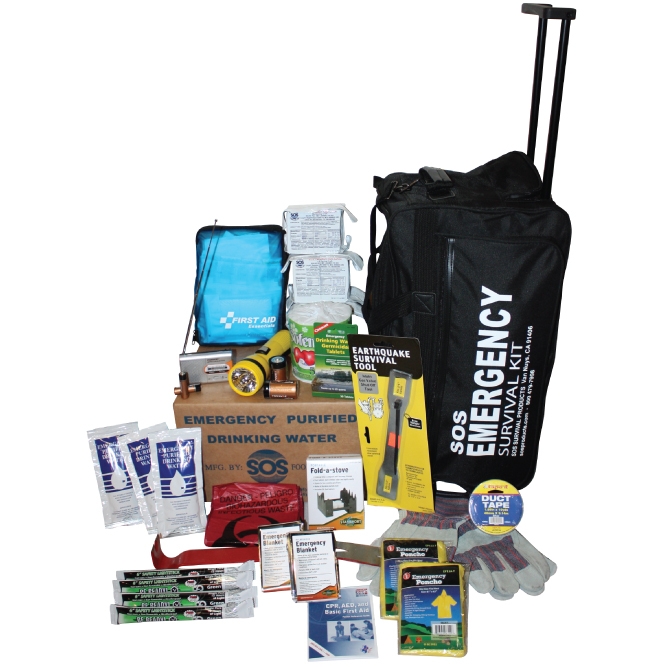Remain Safe with Emergency Preparedness: Expert Tips and Approaches
Remain Safe with Emergency Preparedness: Expert Tips and Approaches
Blog Article
Just How to Develop a Comprehensive Emergency Readiness Plan
In the world of readiness, creating an extensive emergency situation plan is not simply a job to check off a checklist; it is an important foundation of any kind of company or person's durability approach. From all-natural calamities to unanticipated situations, the ability to prepare for, alleviate, and react efficiently can mean the distinction in between turmoil and control. By thoroughly crafting a strategy that deals with various aspects of emergency management, consisting of danger evaluation, communication methods, resource allocation, and calculated decision-making, one can lay a strong structure for securing procedures, lives, and properties. Nevertheless, truth effectiveness of such a plan exists not only in its creation however also in its recurring maintenance and adaptation to progressing dangers and obstacles.
Importance of Emergency Readiness
Emergency readiness is vital for minimizing possible threats and ensuring the security of neighborhoods and people. In today's globe, where all-natural calamities, public health situations, and various other emergency situations can strike without warning, being prepared can make a significant distinction in lessening the impact of these occasions. By having a well-thought-out emergency readiness plan in place, people and companies can react successfully, shield lives, and minimize property damage.
Among the main reasons emergency preparedness is vital is its function in conserving lives. Having a plan that lays out clear treatments for discharge, emergency, and communication response can assist people act promptly and decisively when emergency situations take place (his explanation). This can prevent injuries and fatalities by making certain that people understand what steps to take to stay secure
Additionally, emergency readiness boosts the resilience of neighborhoods. By fostering a society of preparedness and preparation for various circumstances, neighborhoods can get better more quickly from disasters and interruptions. This strength is essential for preserving stability, continuity of procedures, and total wellness when faced with difficulty.
Assessing Potential Risks
Considering the relevance of being prepared for unforeseen occasions, the initial action in developing a reliable emergency situation readiness strategy involves completely examining and evaluating possible dangers. This analysis needs a comprehensive evaluation of all possible threats that can impact the organization, taking into account aspects such as place, industry, and historical data on occurrences. By recognizing these threats, companies can prioritize their readiness efforts and assign sources efficiently to mitigate the most substantial hazards.
Usual threats that organizations may encounter consist of all-natural disasters like floodings, quakes, or typhoons, technical risks such as power outages or data breaches, as well as human-caused dangers like mishaps or intentional acts of violence. Carrying out a threat evaluation also includes considering the possible influence of these events on the organization's operations, workers, customers, and credibility. By conducting a complete risk assessment, companies can develop customized emergency situation feedback strategies that address their particular susceptabilities and make certain efficient preparedness for any potential crisis.
Developing an Interaction Strategy
Developing a clear and detailed interaction strategy is essential for efficient emergency situation preparedness within companies. In times of crisis, communication plays a crucial function in making certain the security and well-being of workers, stakeholders, and the area. A well-balanced interaction strategy need to lay out clear lines of interaction, designate crucial workers liable for interaction tasks, and develop protocols for sharing information promptly and precisely.
One key element of producing a communication strategy is determining alternative and key interaction channels (EMERGENCY PREPAREDNESS). These can include email, text messaging, phone trees, social networks systems, and public address systems. It is essential to make sure that these networks are dependable, available, and on a regular basis evaluated to assure their efficiency throughout emergencies

Building an Emergency Situation Kit
Offered the critical value of preparedness in times of situation, an essential part that organizations have to address is the establishment of an emergency situation set. An emergency situation kit serves as a crucial source that can help mitigate the effect of unforeseen events, making certain that vital materials and tools are readily offered when required most. When putting together an emergency situation kit, it is necessary to consider the particular requirements and circumstances of the company. Basic items such as water, non-perishable food, emergency treatment products, flashlights, batteries, and a battery-powered radio are essential parts of any emergency set. Additionally, organizations should consist of important documents, such as call lists, insurance details, and emergency situation action plans, in water resistant containers within the kit. Frequently examining and upgrading the contents of the emergency package is imperative to make sure that materials are functional and existing. By proactively maintaining an emergency and building kit, companies can improve their preparedness to effectively react to situations and safeguard their employees and properties.
Developing Discharge Procedures
To guarantee the safety and orderly evacuation of personnel during emergencies, organizations need to develop effective and clear evacuation procedures. Evacuation procedures should include a series of prospective circumstances, including fires, natural calamities, or various other emergencies that call for quick emptying.

In addition, organizations need to develop a system for accounting for all employees throughout an emptying to ensure that every person has actually securely exited the properties. Communication plays a crucial duty in discharge procedures, with clear guidelines on just how to leave and when to do so. Normal review and updating of evacuation procedures based upon feedback and altering circumstances are important to maintaining the effectiveness of the plan.
Verdict
In verdict, developing a comprehensive emergency situation preparedness strategy is important for ensuring the safety and security and wellness of individuals in the event of a calamity (EMERGENCY PREPAREDNESS). By examining prospective dangers, creating an interaction plan, building an emergency kit, and developing emptying procedures, individuals and companies can these details be better geared up to react successfully to emergency situations. It is very important to focus on preparedness efforts to reduce the impact of calamities and secure lives and building
In the world of preparedness, creating an extensive emergency situation plan is not merely a task to examine off a list; it is a necessary cornerstone of any type of organization or person's strength strategy. When emergency situations happen, having a plan that outlines clear procedures for evacuation, interaction, and emergency response can aid people act swiftly and decisively. use this link. By carrying out a complete threat analysis, companies can develop customized emergency situation response plans that address their details susceptabilities and make sure effective preparedness for any type of possible dilemma
Creating a clear and thorough interaction strategy is essential for reliable emergency preparedness within organizations. By evaluating potential dangers, creating a communication plan, building an emergency situation kit, and establishing evacuation people, companies and treatments can be better geared up to respond effectively to emergencies.
Report this page